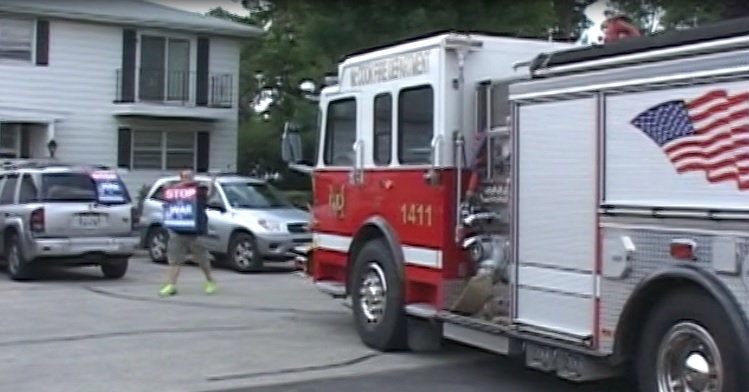Latest DC controversy is over puke contaminated ambulance
Click here if video above fails to play
D.C. Fire and EMS is defending a decision to send a contaminated ambulance to care for a 12-year-old boy.
An EMT was sent out on a call last week after a patient vomited on him and he was unable to change his clothes.
Fire officials said they got 50 calls for service within a relatively short period of time.
The department said the officer in charge made the right call, but the union disagrees.
Last Tuesday morning, the crew of Ambulance 26 got a call to assist an elderly man at a residence on Bladensburg Road in Northeast D.C.
According to two sources with direct knowledge of the call, the crew had put the patient into the back of the rig when the man suddenly became sick and began throwing up.
Immediately after the crew of Ambulance 26 delivered their patient to the hospital, they asked for permission to come back to the firehouse on Rhode Island Avenue so they could decontaminate the ambulance by washing it out with bleach, and for the firefighter, whose clothing was soiled, to change his clothes and take a shower.
But that request was denied. An official tried to intervene and that request was also denied. So the crew of Ambulance 26 took another run and headed to Hardy Middle School where a 12-year-old boy had broken his arm.
The two sources familiar with the run said the crew wiped down the ambulance the best they could and the firefighter cleaned off his pants, but the stench remained.
They then took the boy to Children’s Hospital before being allowed 30 minutes to clean up back at the station.
“Standard protocol is to decon the unit and contact the appropriate officials,” said firefighter union president Ed Smith.
What constitutes a decon?
“A decon means the back of the unit would need to be scrubbed down with some disinfectant,” Smith said. “And in this case, I believe the member should have changed his uniform also.”
He described the incident as highly unusual, but said the EMS system is stretched to capacity.
“They are just running constantly,” he said. “You know, they’re packing a cooler and leaving the firehouse and they don’t return. They are foregoing lunch breaks, just trying to figure out a way to use the bathroom when they are at the hospital. Basic human needs and they are not getting that.”
In a statement released by D.C. Fire and EMS, a spokesman said this about the incident, reading in part: “If exposed to potentially infectious material, members are to clean the area immediately. However, fluids from emesis or vomiting are not known to be infectious.”
“Between 11 a.m. to 1 p.m. on May 27, the Department responded to about 50 emergency medical calls. Given the call volume and need for transport units, the decision was made to send the unit on another run.”
We also wondered what the Department of Health would have to say about the use of a contaminated ambulance. Here is its response, reading in part: “(The D.C. Department of Health) doesn’t technically have a policy or protocol for this specific situation … ideally (from a public health stand point) a medical provider should not be working with other patients if they have been vomited on and haven’t cleaned up. However, the most important factor is always saving residents lives and their ultimate safety.”
We should also note the contaminated ambulance was put in service on the same day and around the same time period where a 90-year-old woman was taken to a hospital on a fire engine after waiting 45 minutes for an ambulance that never came.





